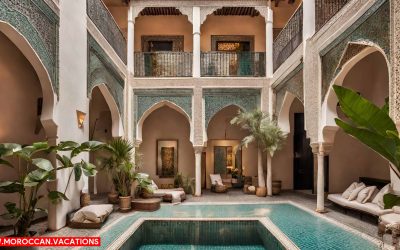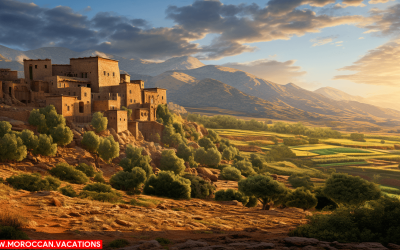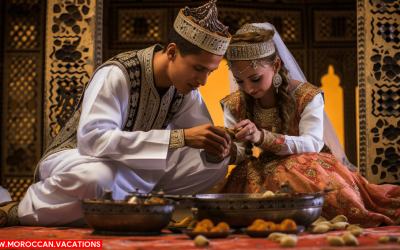The Historic Roots of Moroccan Leather
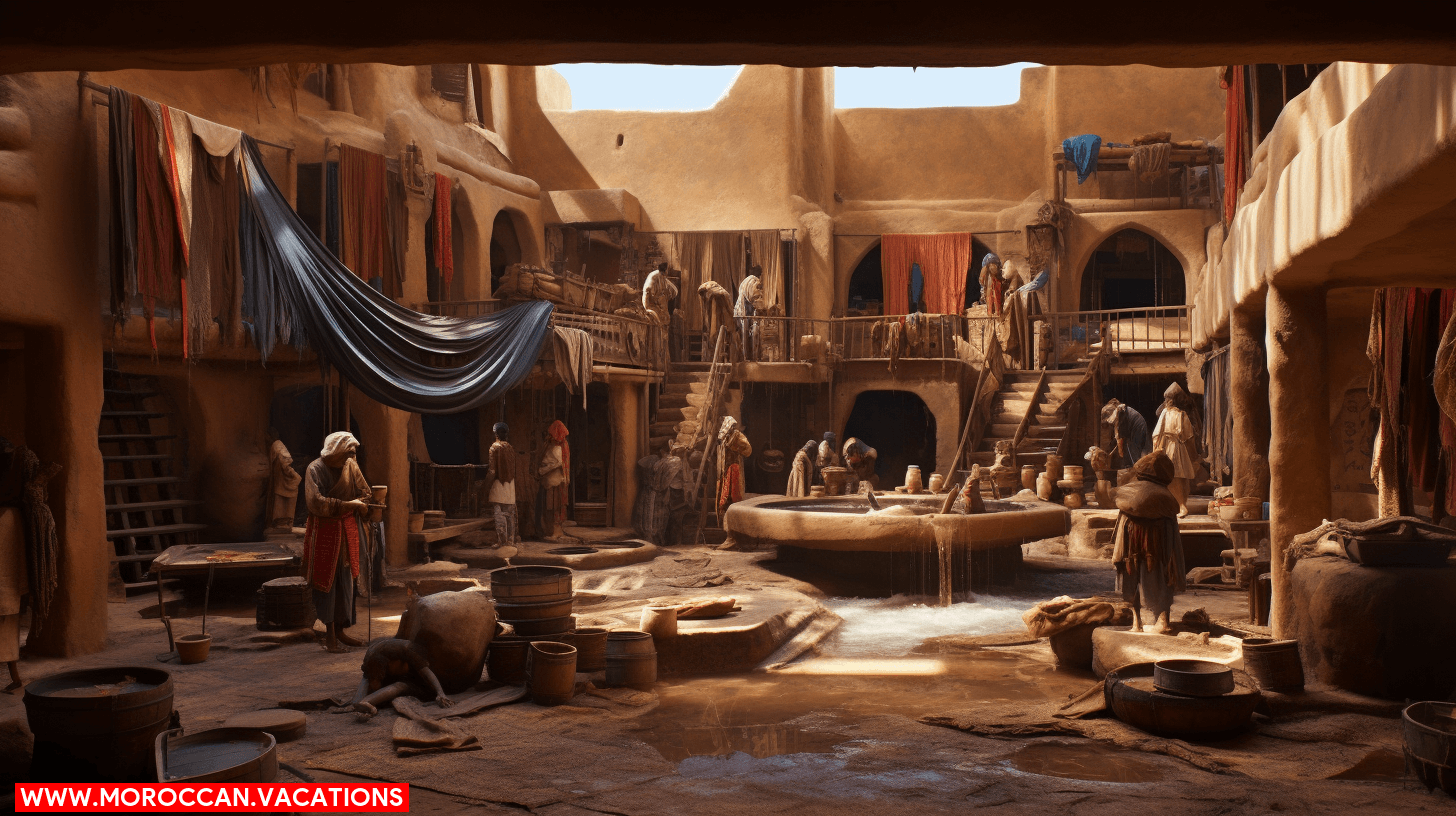

You’re about to embark on a journey from the past to the present, from traditional tanneries to upscale boutiques. You’ll explore Morocco’s rich leather industry, witness the artistry, and appreciate the evolution. As you delve into the craftsmanship, luxury, and role in the fashion world, you’ll also grasp the significance of sustainability in this industry. You’re not just reading an article; you’re unlocking the secrets of Morocco’s leather legacy. Let’s start this adventure, shall we?
Since the early ages, you’ve seen Moroccan leather take its place in history, known for its unrivaled craftsmanship and unique tanning process. This isn’t just a matter of practical use, but one deeply imbued with symbolism. The leather’s seamless blend of durability and elegance makes it a potent symbol of resilience and refinement. You’ll notice the cultural influence that centuries of tradition have imprinted on each item, from the intricately designed poufs to the sturdy yet stylish bags.
You can’t ignore the freedom that comes with owning a piece of Moroccan leather. It’s not simply about having a quality item; it’s about experiencing a piece of a rich cultural heritage that champions independence and self-reliance. Each piece is a testament to the free spirit of the artisans who’ve worked tirelessly, transforming raw hides into exquisite masterpieces.
In the grand tapestry of Moroccan culture, the leather industry threads a story of resilience, independence, and a deep-rooted respect for craftsmanship. As you delve deeper into it, you’ll find that it’s not just about creating a product, but about sustaining a proud cultural legacy. Every piece of Moroccan leather you own becomes a part of this rich, enduring narrative.
Unveiling the Tanning Process
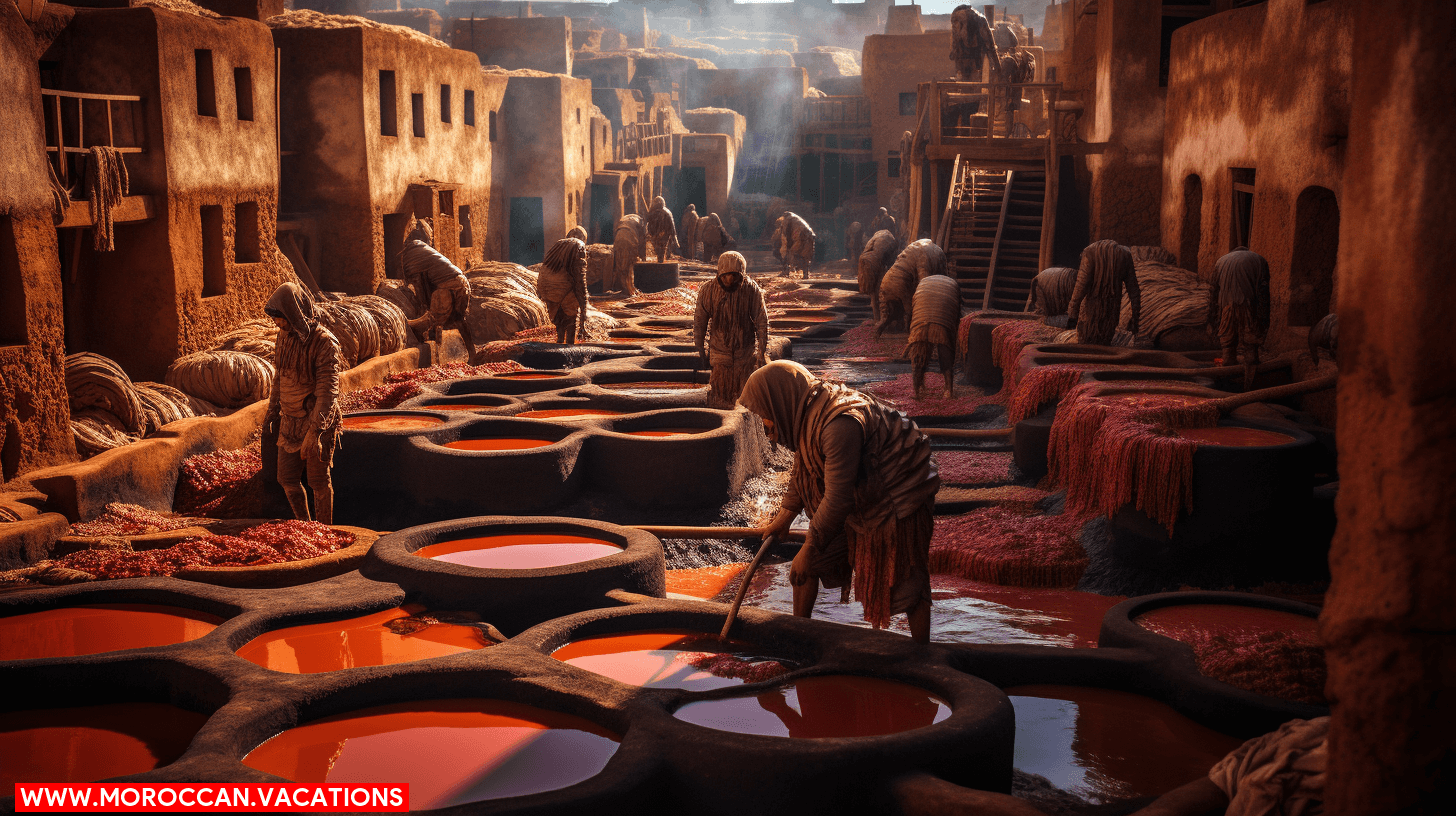

You’ll find that every single piece of Moroccan leather undergoes a meticulous, time-honored tanning process that’s essential to its signature durability and elegance. This involves soaking the hides in a mixture of water, lime, and natural substances like pigeon droppings that soften the leather and remove hair. The hides are then washed and prepared for dyeing.
Leather dyeing techniques have evolved over time, with natural dyes from plants and minerals used widely today. The hides are soaked in vats of dye, and the color is worked into the leather by hand.
| Stages of Tanning | Description |
| Soaking | Softens the hides, removes hair |
| Washing | Prepares hides for dyeing |
| Dyeing | Uses natural dyes to color leather |
| Drying | Hides are left to dry naturally |
| Finishing | Polishing to enhance the look of the leather |
However, the tanning process has health implications. Workers often suffer from respiratory problems due to exposure to harmful substances. Despite this, Moroccan tanners take pride in their craft, upholding traditions that have been passed down for generations. As you wear your Moroccan leather, remember the skill, dedication, and freedom it embodies.
The Role of Traditional Tanneries
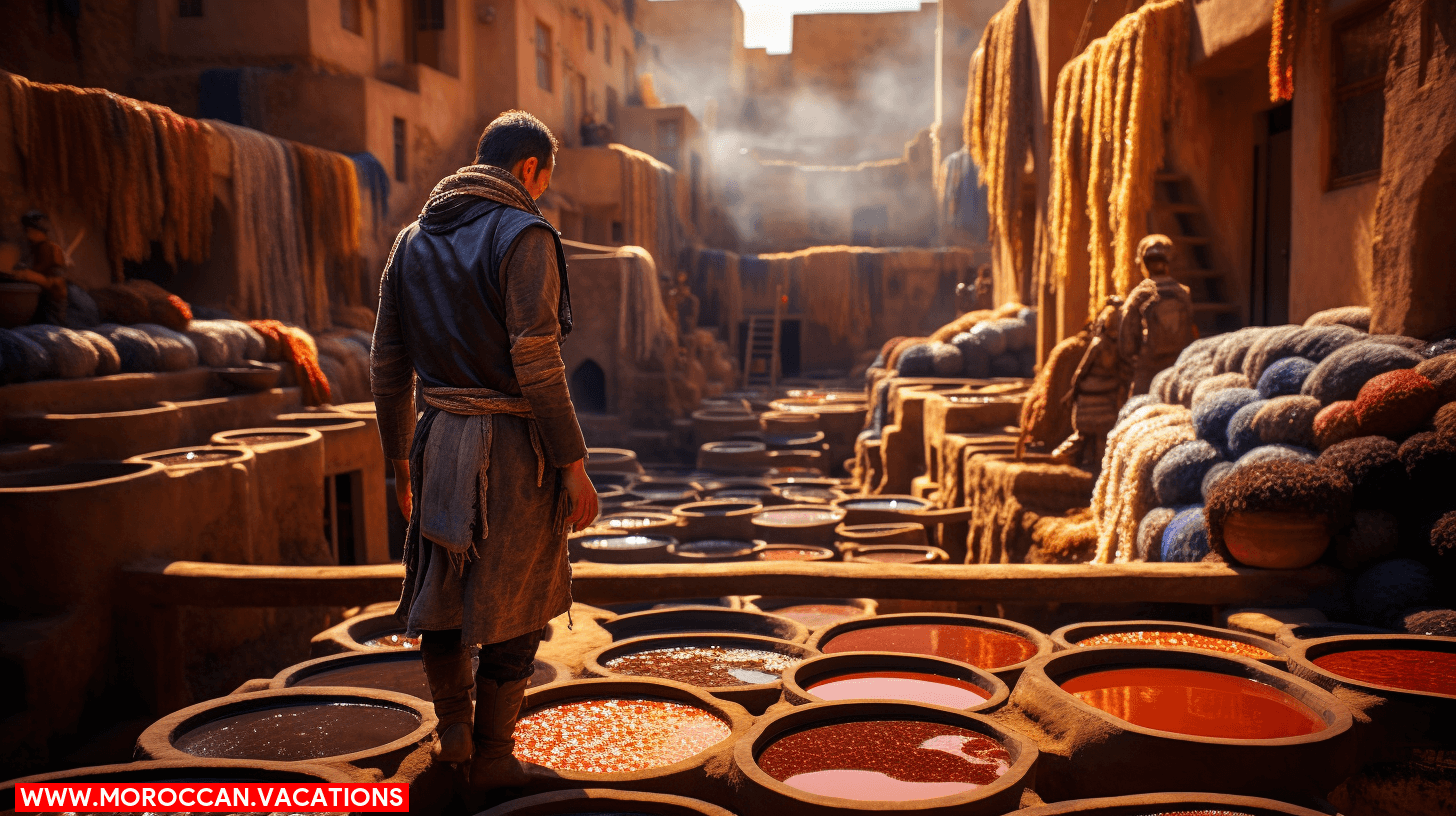

As you delve deeper into Morocco’s leather industry, it’s essential to understand the pivotal role traditional tanneries play in maintaining the country’s rich heritage and producing the exquisite leather products you cherish. These tanneries aren’t just hubs for leather production, they’re living museums, a testament to Morocco’s ancient cultural practices.
Their cultural significance cannot be overstated. Each step in the tanning process, from cleaning and soaking to dyeing and finishing, encapsulates centuries-old methods passed down through generations. It’s this authenticity that gives Moroccan leather its unique charm and value.
Tanneries’ conservation isn’t about clinging to the past, it’s about preserving a vibrant craft that forms the heart of Morocco’s identity. Despite modernization and technology encroaching on traditional practices, these tanneries continue to resist, championing their time-honored methods. They’re unyielding in their dedication to producing high-quality, handcrafted leather, a testament to their resilience and love for their craft.
You, as a lover of freedom and authenticity, can appreciate the tanneries’ refusal to abandon their roots. They’re a symbol of freedom from the fast-paced, mechanized world, a beacon of cultural resilience and an enduring emblem of Moroccan identity.
Artistry in Moroccan Leather Craftsmanship
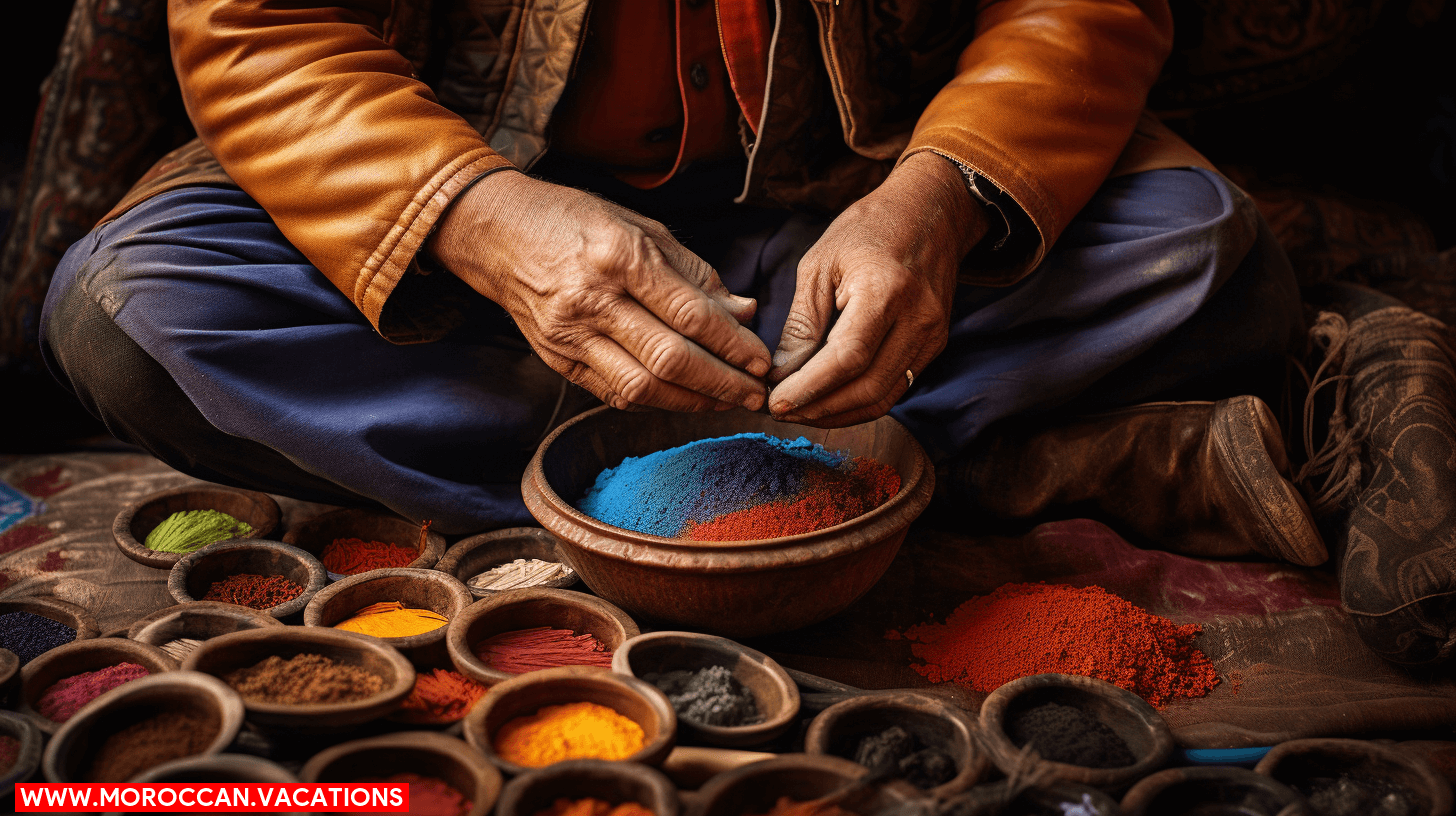

Now, let’s turn our attention to the artistry that goes into the craftsmanship of Moroccan leather, a skill honed by centuries of tradition and dedication. It’s a dance of delicate balance, where a single misstep can ruin the entire piece.
Craftsmanship challenges become apparent when you delve into the intricate process. It starts with raw hides, transformed through a complex series of treatments and dyeing. Leather dyeing nuances are particularly crucial – each hue has a unique recipe and requires a specific skill set to apply.
- Preparation: The hide must be cleaned and softened, a laborious task that requires both strength and patience.
- Dyeing: Exquisite hues are achieved using natural dyes, a process that demands knowledge of color mixing and application.
- Embossing: Intricate patterns are then embossed onto the leather, a task requiring precision and an artistic eye.
Artistry in Moroccan leather craftsmanship isn’t just about creating a product; it’s about preserving a tradition, breathing life into every piece. The freedom to express oneself through this medium is a testament to the resilient spirit of Moroccan artisans. Their work is a tribute to centuries of tradition, a hallmark of their cultural heritage.
Evolution of Morocco’s Leather Industry
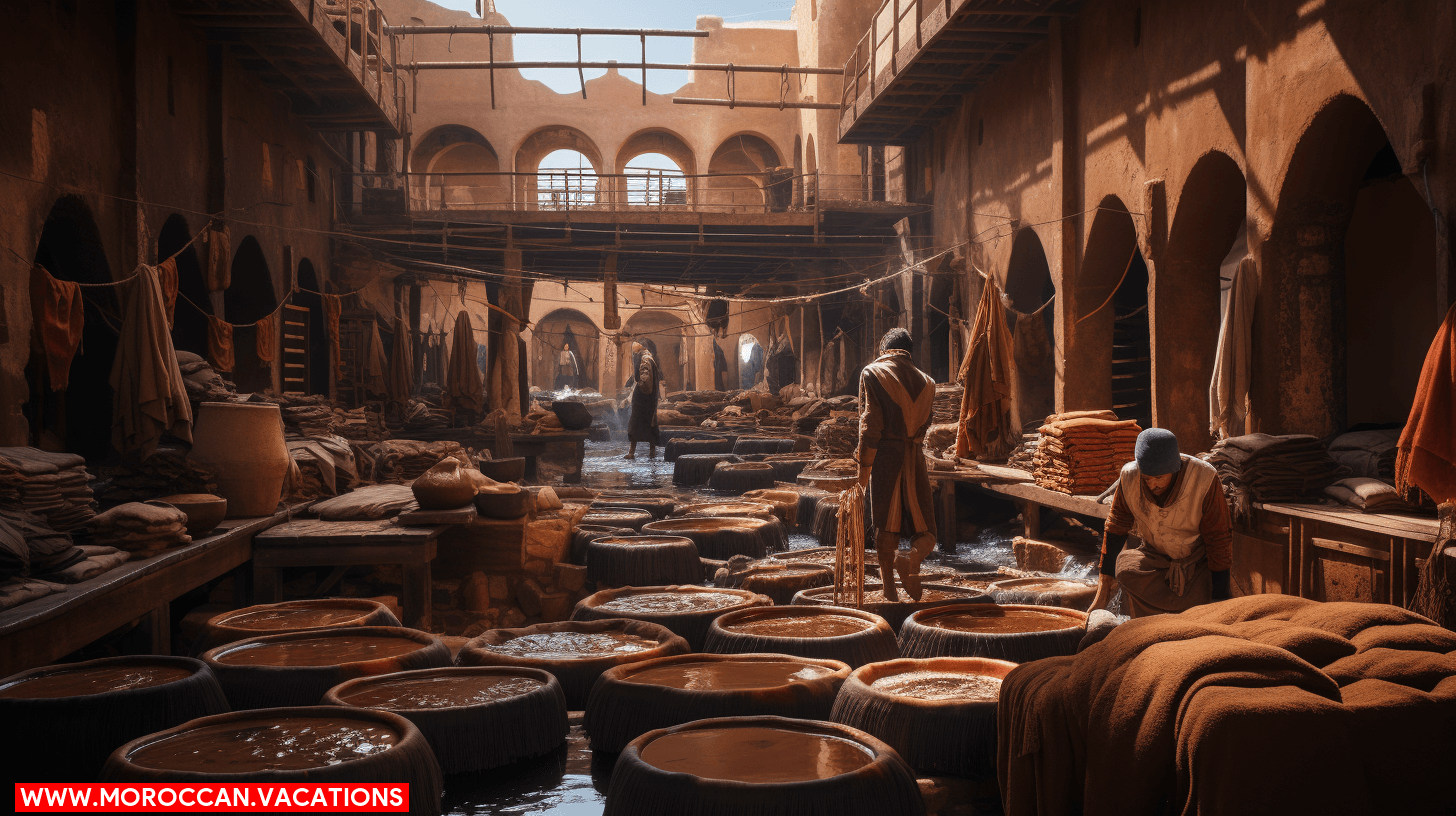

Delve into the fascinating evolution of Morocco’s leather industry, a journey that’s seen it transition from traditional tanneries to luxurious boutiques. This transformation hasn’t been without its challenges, but the industry’s resilience shines through.
Leather exportation, once the backbone of Morocco’s economy, has experienced a shift. Traditional tanneries, with their ancient techniques and raw materials, struggle to meet international standards. The industry grapples with the challenges of modernization, environmental regulations, and increasing competition from synthetic materials. However, these struggles have not deterred the nation’s determination.
Instead, they’ve adapted. High-end boutiques now showcase the exquisite craftsmanship of Moroccan leather, marrying tradition with innovation. These boutiques cater to a freedom-desiring audience, offering unique, handcrafted pieces that echo the rich cultural heritage of Morocco. They’ve become global ambassadors for Moroccan leather, boosting its prestige and increasing its demand worldwide.
The evolution of Morocco’s leather industry serves as a testament to the nation’s ability to adapt and thrive amidst challenges. It’s a story of resilience, innovation, and the enduring appeal of Moroccan craftmanship. As you explore further, you’ll witness the industry’s remarkable journey and its exciting future prospects.
Impact of Modern Techniques
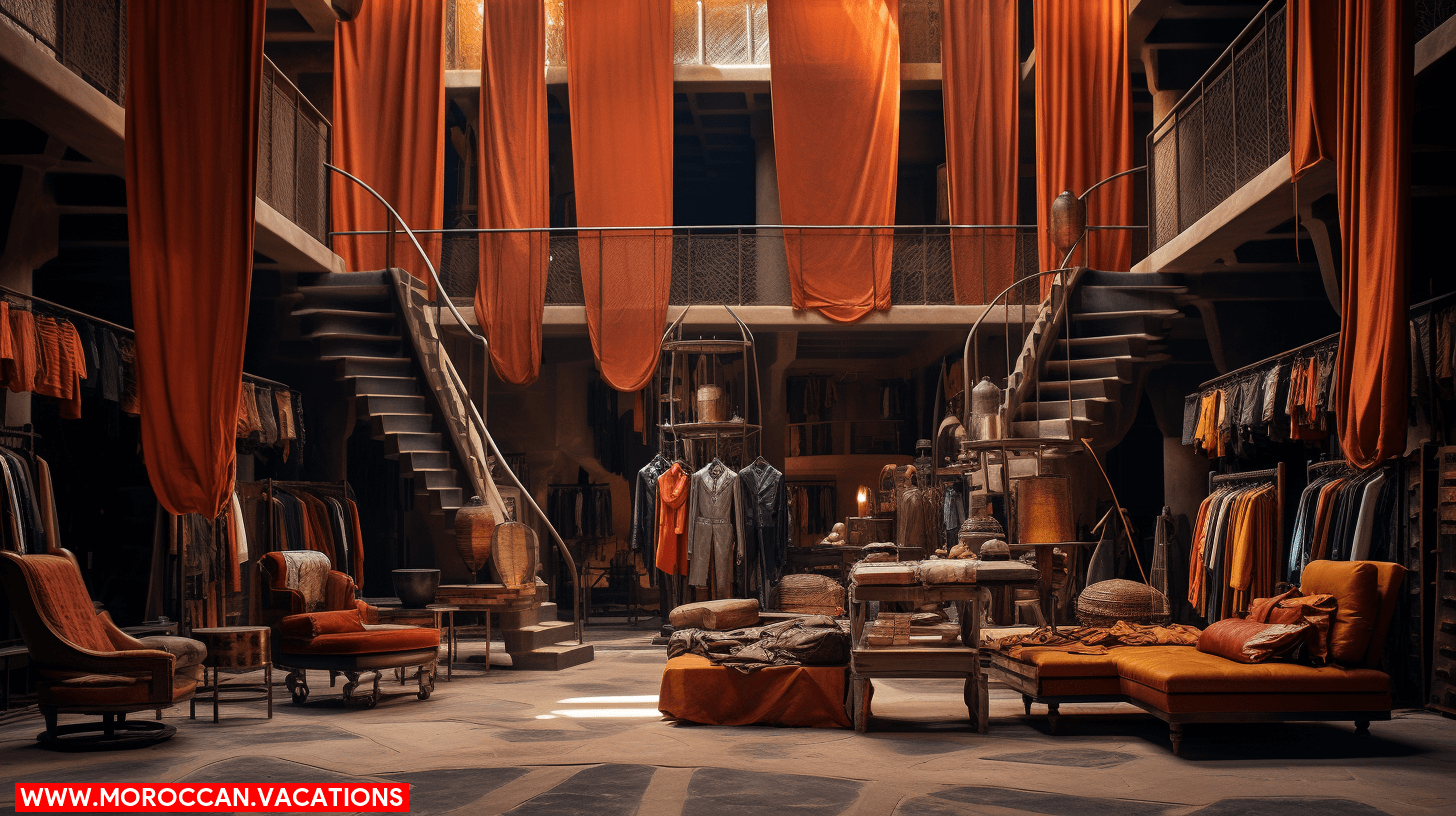

While you marvel at the industry’s adaptability, it’s important to understand that the introduction of modern techniques has significantly impacted the Moroccan leather industry. Technological innovation has revolutionized the way leather is processed, enhancing efficiency and quality.
- One major impact has been the reduction of manual labour. Automated machines now handle tasks that were previously painstakingly done by hand, increasing productivity and minimizing errors.
- Secondly, advanced tanning methods have improved the durability and aesthetics of Moroccan leather, making it highly sought after in the global market.
- Lastly, technology has enabled the Moroccan leather industry to have a global influence. Online platforms have amplified its reach, opening up new markets and increasing exports.
These advancements have not only transformed the industry but also the lives of local artisans. Now, they have the freedom to focus more on design and craftsmanship, rather than being bogged down by the physical demands of the tanning process. The combination of tradition and technology has uniquely positioned the Moroccan leather industry for success in the global arena. The impact of modern techniques is undeniable and will continue to shape the industry’s future.
Luxury Leather Products in Modern Morocco
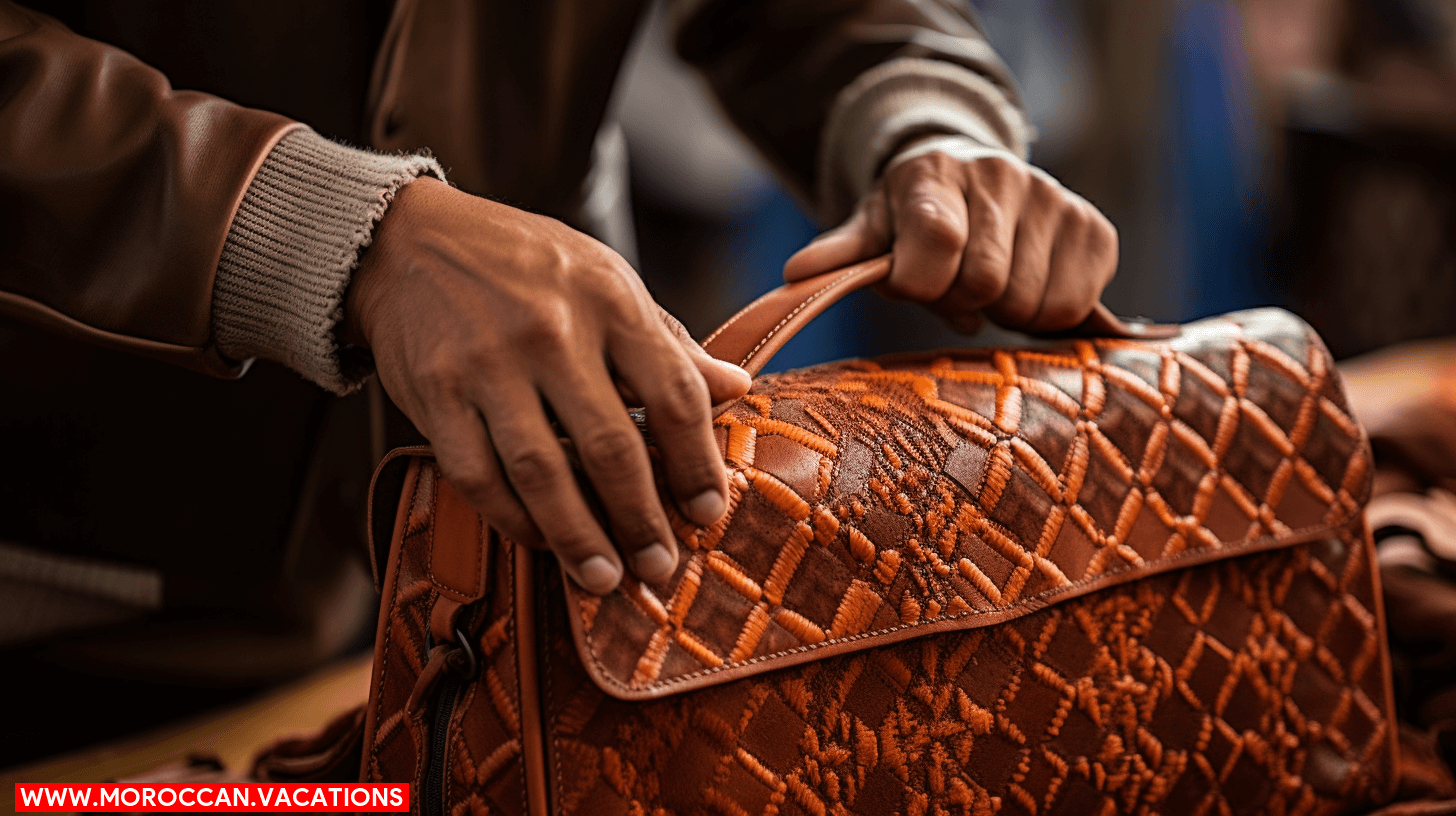

In the midst of this technological revolution, you’ll find that Morocco’s luxury leather products have carved out a niche for themselves in the global market. The nation has capitalized on its rich tradition of leatherwork, blending it with modern design and manufacturing techniques to create products that are globally competitive.
The Moroccan government’s leather export policies have played a crucial role in this. By promoting free trade and providing incentives for local artisans, they’ve managed to enhance the image of Moroccan leather in the global arena. These policies have not only stimulated growth in the domestic market but also attracted international buyers who value the unique craftsmanship of Moroccan leather.
And what’s the result? Today, you’ll find Moroccan leather products gracing the shelves of high-end boutiques in Paris, London, and New York. Leather bags, shoes, belts – each piece exudes a sense of luxury that is hard to replicate. This is a testament to Morocco’s ability to marry tradition with modernity, and a reflection of the nation’s global competitiveness.
In essence, Morocco has transformed its leather industry from a localized craft to a lucrative export business, offering freedom to artisans and appealing to luxury seekers globally.
Moroccan Leather in the Fashion World
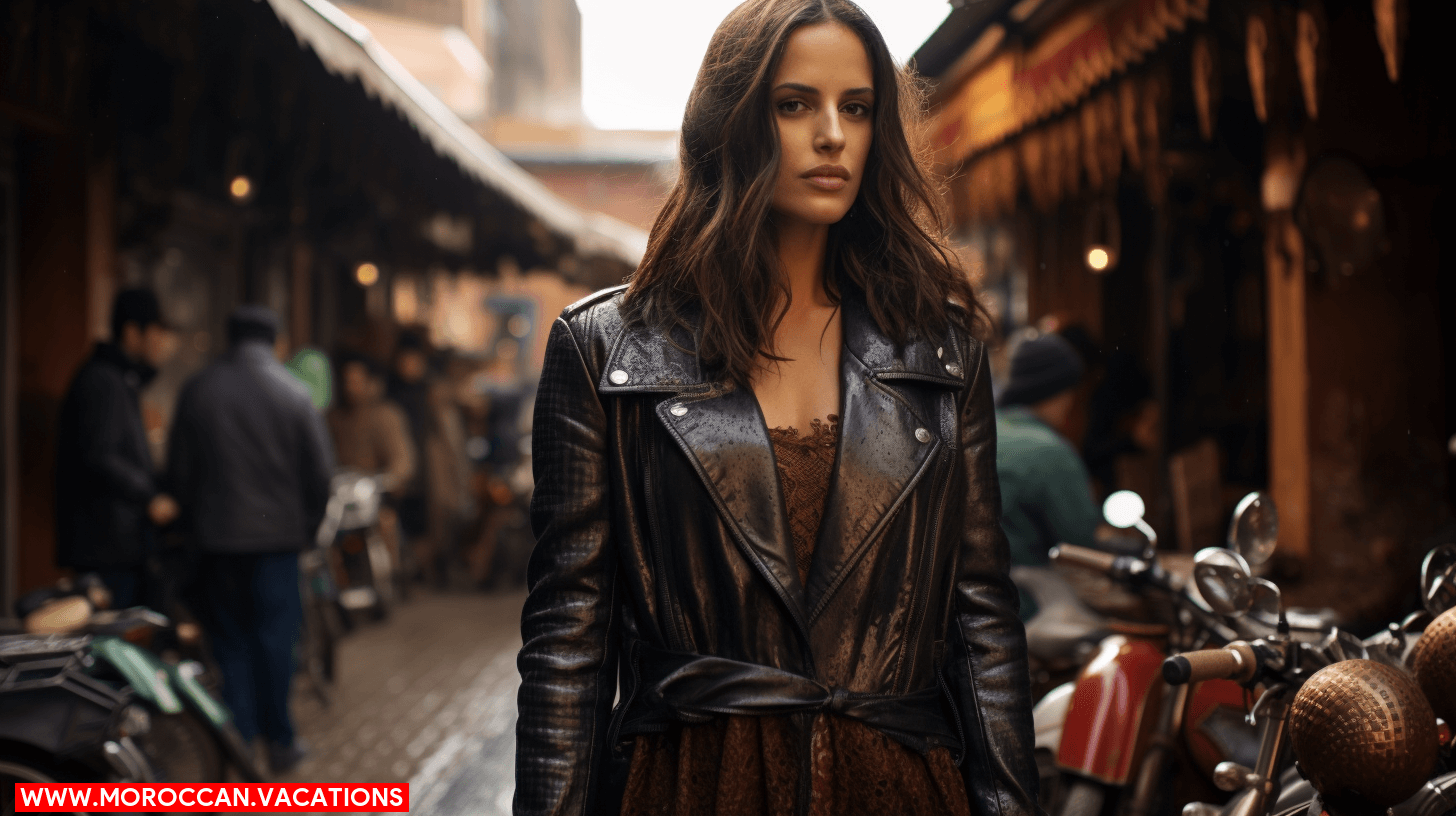

Stepping into the fashion world, you’ll find Moroccan leather making a vibrant splash, elevating everyday wardrobe pieces with its unique blend of tradition and luxury. Several factors contribute to this rich tapestry, weaving a compelling narrative of Morocco’s leather industry.
* Firstly, Morocco’s leather exports have surged. The global demand for Moroccan leather is on the rise, a testament to its quality and appeal.
* Secondly, fashion influencers worldwide have embraced Moroccan leather, showcasing its versatility and elegance in their outfits and accessory choices.
* Lastly, the fusion of traditional techniques with innovative designs has given Moroccan leather a distinctive identity in the fashion world.
This rise of Moroccan leather isn’t just about style. It’s a movement towards appreciating craftsmanship, tradition, and authenticity. It represents a longing for freedom, to be unique and bold in choice. It’s about taking a piece of Morocco’s rich heritage and blending it with the modern world.
As you wear your Moroccan leather pieces, remember, you’re not just making a fashion statement. You’re embracing a narrative of resilience, tradition, and innovation.
Sustainability in Morocco’s Leather Industry
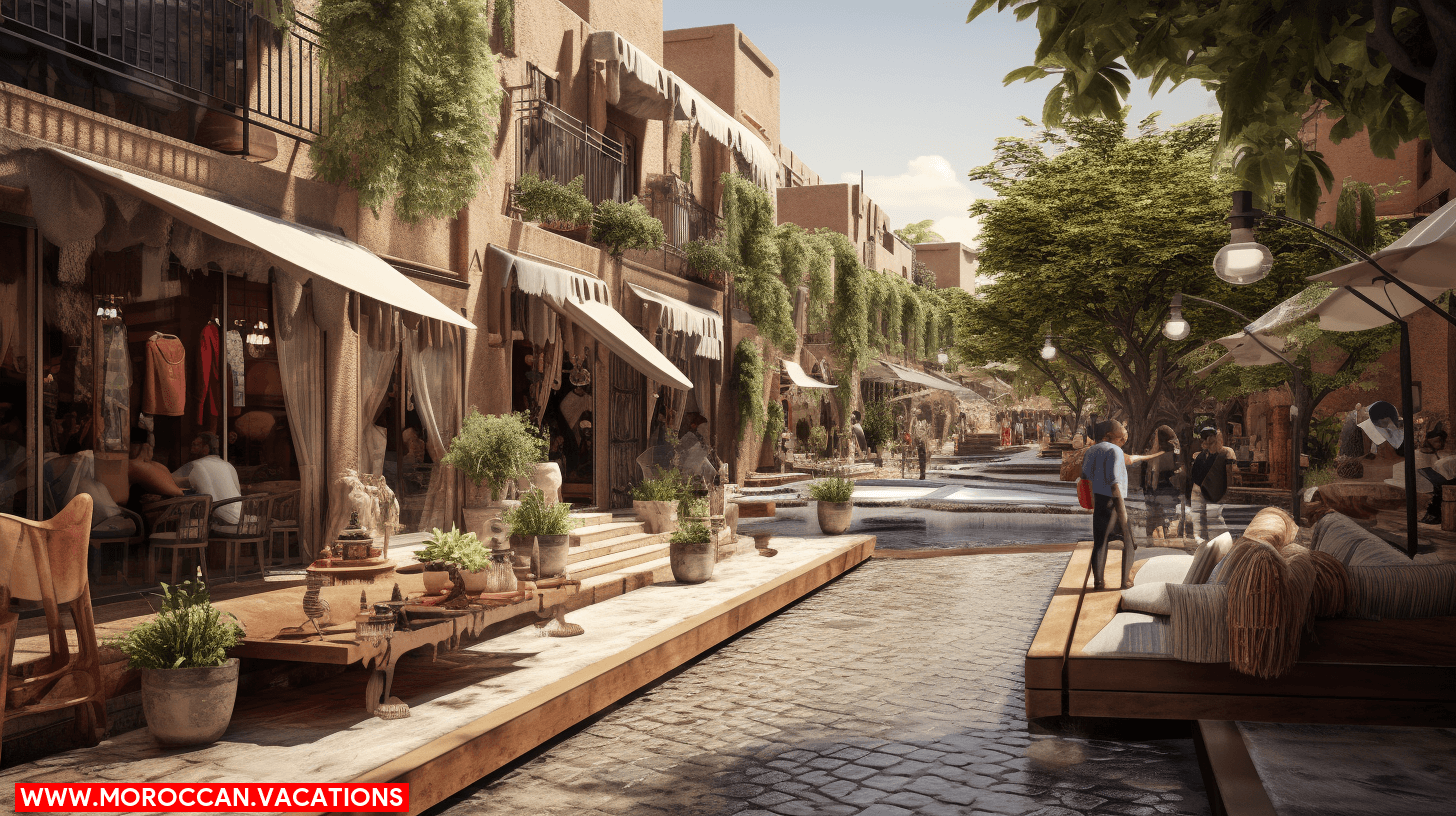

You might not know this, but a significant portion of Morocco’s leather industry is steadily shifting towards sustainable practices. It’s not just about producing high-quality, luxurious products anymore. It’s about doing so while minimizing environmental harm. That’s the essence of the eco-friendly innovations being implemented.
Take leather recycling practices, for instance. Think of them as the industry’s way of saying ‘no’ to waste. It’s about turning scraps into valuable goods rather than discarding them. It’s about using every bit of the raw material.
Then there’s the push for cleaner tanning methods. Traditional practices are notorious for their environmental impact, from the heavy water usage to the harmful chemicals. But now, Moroccan tanneries are making a switch. They’re using organic substances. They’re reducing water consumption. They’re proving that sustainability and quality can go hand in hand.
These practices aren’t just good for the planet; they’re good for the industry itself. They’re paving the way for a more sustainable future, one where the production of luxury leather goods doesn’t come at the expense of the environment. And that’s a future we can all get behind.
The Future of Moroccan Leather
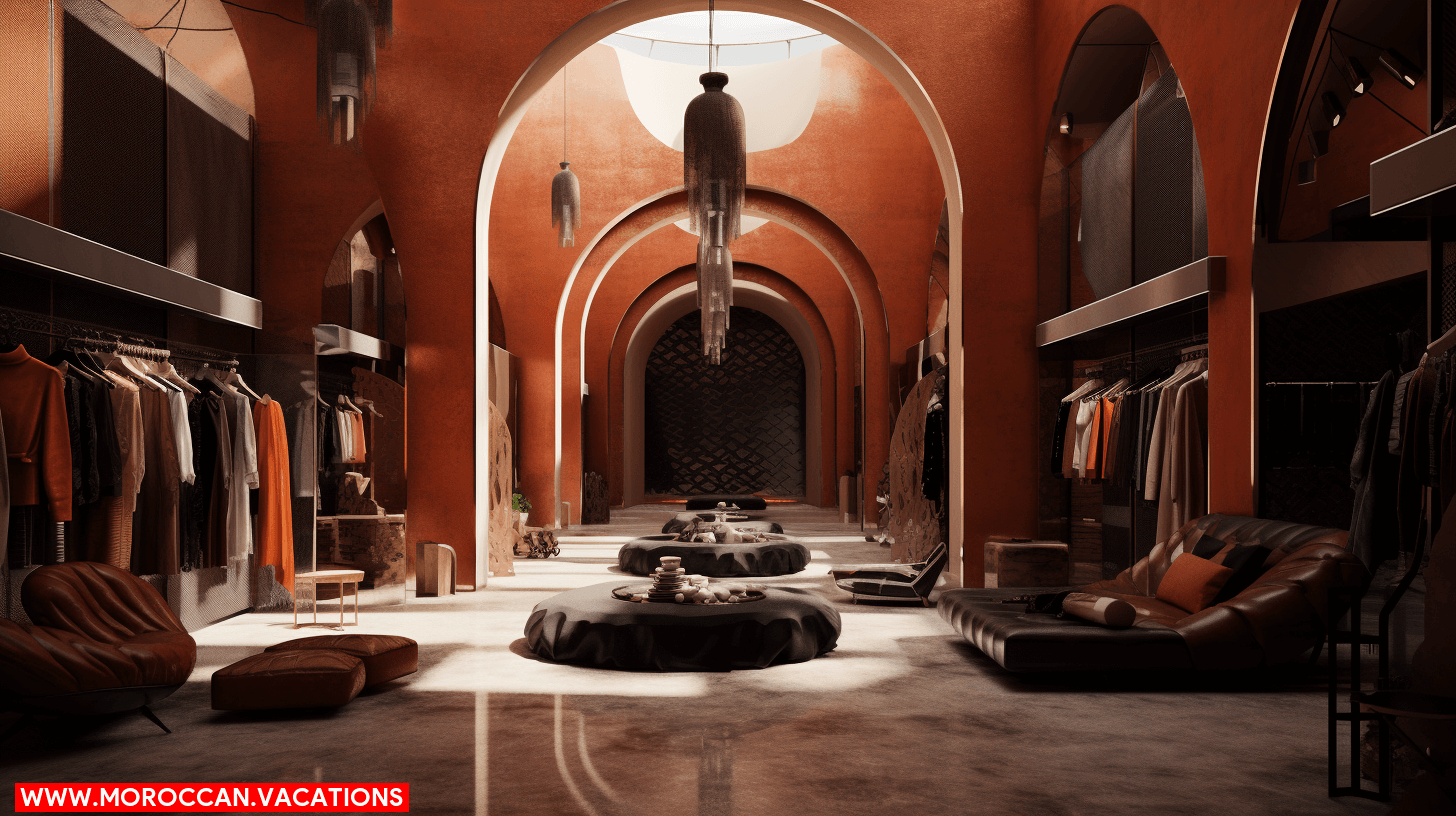

Picturing a future where Moroccan leather thrives without harming the environment, you’re witnessing a revolution in progress. This vision is not a distant dream, but a tangible goal that Morocco’s leather industry is tirelessly working towards.
- Leather Exports: Morocco aims to increase its leather exports significantly, focusing on sustainable practices. You’ll see more Moroccan leather goods in international markets, known for their unique designs and eco-friendly production methods.
- Leather Tourism: Imagine visiting Morocco, not just for its rich history and culture, but also to explore its vibrant leather industry. You’ll stroll through bustling markets, watch artisans at work, and even participate in workshops. The Moroccan government is keen on promoting leather tourism, creating an immersive experience for visitors.
- Technology and Innovation: The industry is embracing advanced technologies to improve efficiency and minimize environmental impact. You’ll witness the use of solar energy in tanneries, water recycling systems, and bio-based dyes.
Introducing Ayoub Karbachi, a brilliant wordsmith and curator of the Moroccan Vacations website. Prepare to immerse yourself in mesmerizing narratives and extraordinary moments, as he unveils the allure of Morocco's captivating destinations like never before.
Related Articles
The Role of Riads in Marrakesh's Architectural Identity
Historical Background of Riads Imagine wandering through the labyrinthine streets of Marrakesh, the air thick with the aroma of spices and the sounds of bustling marketplaces. As you turn a corner, you stumble upon a hidden oasis - a riad. These traditional Moroccan...
Hidden Gems: Off-the-Beaten-Path Berber Villages
Discover the authentic charm of Berber villages with our off-the-beaten-path tours. Immerse yourself in hidden gems, away from the tourist crowds, and experience the rich culture and breathtaking landscapes of Berber communities.
Unveiling the Rich Traditions: a Glimpse Into Traditional Moroccan Wedding Customs
“Discover the enchanting world of traditional Moroccan wedding customs as we unveil the rich tapestry of time-honored traditions. Immerse yourself in the beauty and significance of Moroccan nuptials with a captivating glimpse into the cultural richness that defines these celebrations. Explore the intricate rituals, vibrant ceremonies, and the deep-rooted customs that make Moroccan weddings truly unique.

